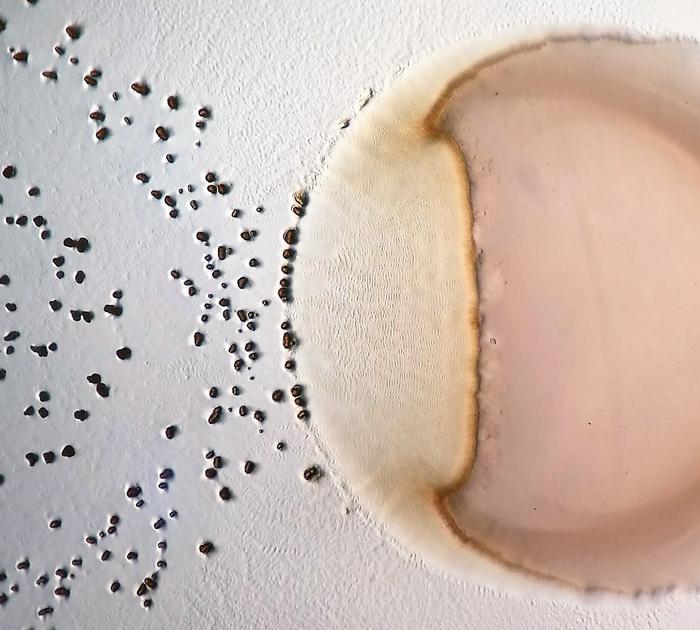In a new study, two species of bacteria grown in a lab reversed their predator-prey relationship after one species was grown at a lower temperature. Marie Vasse of MIVEGEC, France, and colleagues publish these findings January 23rd in the open access journal PLOS Biology.

Credit: Nicola Mayrhofer (CC-BY 4.0, https://creativecommons.org/licenses/by/4.0/)
In a new study, two species of bacteria grown in a lab reversed their predator-prey relationship after one species was grown at a lower temperature. Marie Vasse of MIVEGEC, France, and colleagues publish these findings January 23rd in the open access journal PLOS Biology.
Prior research has shown that ecological context can influence predator-prey relationships. For instance, similarity or contrast between background color and coloration of a prey species can influence how easily it is detected by predators. In addition, predator-prey relationships can sometimes switch, as is the case for two crustacean species that mutually prey on each other, where a change in surrounding salinity reverses which species dominates. However, there are few other known examples of such switching in response to non-biological ecological changes.
Some bacteria prey on others, and ecological context can influence predation efficiency. Building on that knowledge, Vasse and colleagues conducted several laboratory experiments to test how temperature might influence the predator-prey relationship between the bacterial species Myxococcus xanthus and Pseudomonas fluorescens.
They found that, when P. fluorescens was grown in a dish at 32 degrees Celsius and then exposed to M. xanthus, M. xanthus acted as the predator and extensively killed P. fluorescens. However, after P. fluorescens was grown at 22 degrees Celsius, the predator-prey relationship switched, with P. fluorescens killing and obtaining nutrients from M. xanthus for its continued growth.
The researchers conducted further experiments to better understand the mechanism by which growth at chillier temperatures may have reversed the predator-prey roles. They homed in on a non-protein substance released by P. fluorescens that is lethal to M. xanthus, the production of which appears to be influenced by temperature.
The researchers say their findings suggest that many forms of microbe-microbe killing not traditionally associated with predation – the consumption of a killed organism by its killer – may in fact result in it. They also note that, in this study, the temperature at which P. fluorescens grew before meeting M. xanthus could determine which would be predator and which prey when the two species met later, highlighting the importance of considering historical context when evaluating present predator-prey relationships.
This study and follow-up research could aid understanding of both natural ecology and practical applications, such as optimizing the use of some microbes to control others.
The authors add, “We find it fascinating that a relatively small change in just one ecological factor can determine who kills and eats whom in microbial predation. We suspect that microbe-microbe killing results in predation far more often than has previously been appreciated.”
#####
In your coverage, please use this URL to provide access to the freely available paper in PLOS Biology: http://journals.plos.org/plosbiology/article?id=10.1371/journal.pbio.3002454
Citation: Vasse M, Fiegna F, Kriesel B, Velicer GJ (2024) Killer prey: Ecology reverses bacterial predation. PLoS Biol 22(1): e3002454. https://doi.org/10.1371/journal.pbio.3002454
Author Countries: France, Switzerland
Funding: This work was funded by Swiss National Science Foundation (SNSF) grants 31003A_160005 and 310030B_182830 to GJV. The funders had no role in study design, data collection and analysis, decision to publish, or preparation of the manuscript.
Journal
PLoS Biology
DOI
10.1371/journal.pbio.3002454
Method of Research
Experimental study
Subject of Research
Cells
COI Statement
Competing interests: The authors have declared that no competing interests exist.




